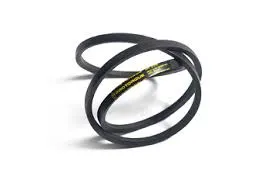- Arabic
- French
- Russian
- Spanish
- Portuguese
- Turkish
- Armenian
- English
- Albanian
- Amharic
- Azerbaijani
- Basque
- Belarusian
- Bengali
- Bosnian
- Bulgarian
- Catalan
- Cebuano
- Corsican
- Croatian
- Czech
- Danish
- Dutch
- Afrikaans
- Esperanto
- Estonian
- Finnish
- Frisian
- Galician
- Georgian
- German
- Greek
- Gujarati
- Haitian Creole
- hausa
- hawaiian
- Hebrew
- Hindi
- Miao
- Hungarian
- Icelandic
- igbo
- Indonesian
- irish
- Italian
- Japanese
- Javanese
- Kannada
- kazakh
- Khmer
- Rwandese
- Korean
- Kurdish
- Kyrgyz
- Lao
- Latin
- Latvian
- Lithuanian
- Luxembourgish
- Macedonian
- Malgashi
- Malay
- Malayalam
- Maltese
- Maori
- Marathi
- Mongolian
- Myanmar
- Nepali
- Norwegian
- Norwegian
- Occitan
- Pashto
- Persian
- Polish
- Punjabi
- Romanian
- Samoan
- Scottish Gaelic
- Serbian
- Sesotho
- Shona
- Sindhi
- Sinhala
- Slovak
- Slovenian
- Somali
- Sundanese
- Swahili
- Swedish
- Tagalog
- Tajik
- Tamil
- Tatar
- Telugu
- Thai
- Turkmen
- Ukrainian
- Urdu
- Uighur
- Uzbek
- Vietnamese
- Welsh
- Bantu
- Yiddish
- Yoruba
- Zulu
nov . 10, 2024 01:18 Back to list
Advantages of Single Sided Timing Belts in Mechanical Applications
Understanding Single-Sided Timing Belts Functions, Applications, and Benefits
In the realm of mechanical engineering and automotive design, timing belts play a critical role in synchronizing engine components, ensuring that everything from valves to crankshafts operates in perfect harmony. Among the different types of timing belts, single-sided timing belts stand out for their unique functionalities and applications. This article delves into the features, benefits, and diverse uses of single-sided timing belts, helping you appreciate their importance in various mechanical systems.
What is a Single-Sided Timing Belt?
A single-sided timing belt is designed to transmit power between two shafts with a drive system, where the belt is toothed on one side. This tooth design allows the belt to engage effectively with pulleys, ensuring precise movements and timing. Unlike double-sided belts, which have teeth on both sides and can engage with multiple pulleys, single-sided timing belts offer a more straightforward application, primarily used in configurations where space is limited or where a single direction of transmission is needed.
Key Features
1. Toothed Design The inner surface of a single-sided timing belt features specially designed teeth that fit into corresponding grooves on the pulleys. This engagement minimizes slippage and maintains a constant phase relationship between the pulleys, which is essential for applications such as internal combustion engines.
2. Material Composition Single-sided timing belts are typically made from high-quality elastomer materials that offer durability and resistance to wear. Additionally, these belts often have reinforcing fibers, such as Kevlar or fiberglass, enhancing their tensile strength when subjected to high loads.
3. Variety of Sizes These belts come in various lengths and widths, allowing engineers to select a specific belt that meets the design requirements of their systems. Custom lengths can also be manufactured for unique applications.
Benefits of Single-Sided Timing Belts
1. Precision and Reliability Due to their toothed nature, single-sided timing belts provide excellent precision in timing and positioning, which is crucial for synchronous operations in machinery. This reliability translates into improved overall system efficiency.
2. Reduced Maintenance Compared to chain-driven systems, timing belts require less maintenance. They do not necessitate lubrication, which reduces the chances of contamination and wear, prolonging the belt’s operational life.
single sided timing belt

3. Quiet Operation Single-sided timing belts operate quietly, making them suitable for applications where noise reduction is paramount, such as in household appliances and certain types of industrial machinery.
4. Lightweight These belts are generally lighter than their chain counterparts, which can lead to significant savings in energy consumption, particularly in motor drives. The reduced weight also allows for a more compact design, saving valuable space.
Applications
Single-sided timing belts are utilized in a diverse range of applications across various industries, including
- Automotive Engines A primary use of single-sided timing belts is in automotive engines, where they synchronize the rotation of the crankshaft and camshaft. This synchronization is crucial for engine performance, fuel efficiency, and emissions control.
- Industrial Machinery In manufacturing systems, these belts are used to drive conveyors, precision machines, and robotic arms, facilitating accurate motion control.
- Consumer Electronics Many household appliances, such as washing machines and food processors, employ single-sided timing belts due to their quiet operation and reliability.
- Bicycles and Motorcycles Single-sided timing belts can also be found in certain designs of bicycles and motorcycles, offering an efficient alternative to traditional chains.
Conclusion
Single-sided timing belts represent a vital component in the machinery and automotive landscapes, ensuring the reliable and precise operation of countless devices. With their range of advantages—including reduced maintenance requirements, lightweight design, and quiet operation—these belts are indispensable in applications wherever synchronization and efficiency are key. As technology advances, the applications of single-sided timing belts will continue to expand, paving the way for innovations in design and engineering that harness their unique properties. Whether in an automotive engine or an industrial setting, the impact of single-sided timing belts on performance and efficiency cannot be overstated.
-
Flat Drive Belts for Sale – Durable & High Performance
NewsAug.11,2025
-
Precise Timing Belt Operation: Function & FAQ Guide
NewsAug.10,2025
-
Precision Double-Sided Toothed Endless Flat Drive Belts
NewsAug.09,2025
-
Durable Tooth Belts: Precision Power for Poly V Belt Drives
NewsAug.08,2025
-
Reliable Diesel Engine Belts & Tensioners for Optimal Performance
NewsAug.07,2025
-
23100-KVB-901 Drive Belt for Honda VARIO | OEM Performance
NewsAug.06,2025

